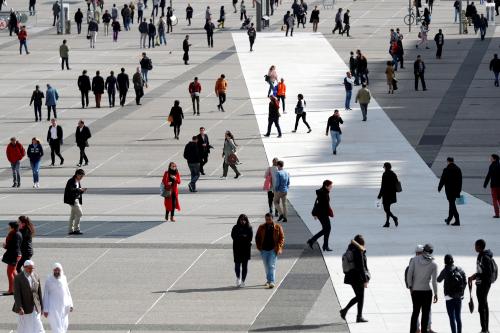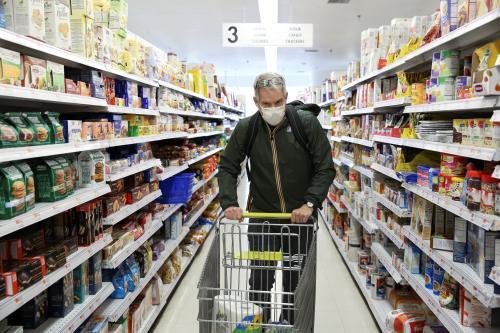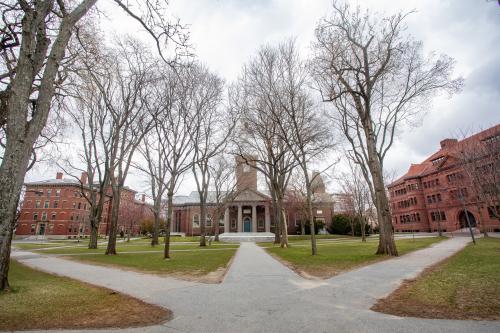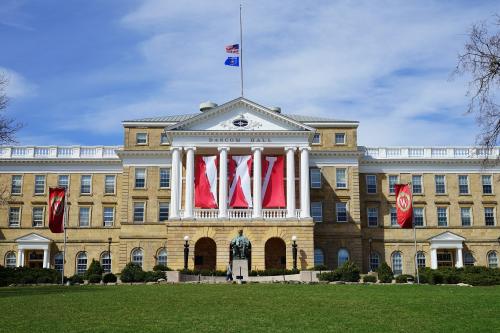If you want more content like this, subscribe to our newsletter.
This week in Class Notes:
-
- California’s shelter-in-place order was effective at mitigating the spread of COVID-19.
- Asian Americans experience significant discrimination in the Harvard admissions process.
- The U.S. tax system is biased against labor in favor of capital, which has resulted in inefficiently high levels of automation.
- Our top chart shows that poor workers are much more likely to keep commuting in the midst of COVID-19 than rich ones.
- Rana Foroohar describes how COVID-19 is changing the higher-education landscape.
- Finally, check out Johnathan Rothwell and Hannah Van Drie’s new piece on the effects of COVID-19 on labor markets around the world.
Did California’s shelter-in-place order work? Early coronavirus-related public health effects
On March 19, 2020, California Governor Gavin Newsom issued Executive Order N-33-20 2020, which required all residents to shelter in place for all but essential activities. This shelter-in-place order — the first statewide order of its type issued in the United States — was designed to limit the spread of COVID-19. Using daily, state-level coronavirus data, Friedson et al. find that the order reduced the number of cases by 125 to 219 per 100,000 and prevented nearly 1,700 COVID-related deaths during the first month following its implementation.
Asian American discrimination in Harvard admissions
Do Asian Americans face discrimination in elite college admissions? Using data made public in the SFFA v. Harvard case, Arcidiacono et al. suggest that the answer is yes. The discrimination manifests itself both as a direct penalty in admissions and as a penalty in the way Harvard rates applicants. Asian Americans are stronger than white applicants on nearly all dimensions associated with each of the ratings. Yet, on ratings like the personal and overall rating, Asian Americans receive lower scores. Asian Americans would experience 20% higher odds of receiving a 2 or better on the personal rating if they were treated as white applicants. The odds would almost double if they were treated as African American applicants. These penalties also translate to penalties in admissions. Absent ratings penalties, Asian Americans would be admitted at a 19% higher rate.
Does the US tax code favor automation?
A popular argument in favor of technological advancement is that even if automation contributes to the stagnation of wages, the adoption of these technologies has a positive net effect and any adverse consequences can be dealt with using redistributive policies and investments in education and training. But could it be that the extent of automation is excessive? Acemoglu et al. argue that the U.S. tax system is biased against labor in favor of capital, resulting in excessive automation and sub-optimally low levels of employment. Using the U.S. tax system of the 2010s as a baseline, the authors show that moving to optimal levels of capital and labor taxation would raise employment by 4%, increase the labor share by nearly 0.8 percentage points, and restore the optimal level of automation. Additionally, reducing labor taxes — or combining lower capital taxes with automation taxes – is shown to increase employment much more than the uniform reductions in capital taxes enacted between 2000 and 2018.
Top chart
This week’s top chart shows that Americans traveled 35% less during the week of April 6th than they did between January 3rd and February 6th. However, this reduction in travel varied significantly by income. Those living in the richest 10% of counties reduced their travel by 39%; those in the poorest 10% cut their movements by just 27%.

Choice opinion
“COVID-19 has put moral hazard front and center on the national agenda. The U.S. cannot have taxpayer-funded bailouts that put big rich companies — or colleges — ahead of those who need help more…Educational institutions have become highly financialized in recent years. Many have engaged in dicey debt deals and complex swaps arrangements that backfired, leaving institutions and students with even more costs. In that sense, the coronavirus-induced crisis could be a welcome chance to take on some of the problems in U.S. higher education,” writes Rana Foroohar in the Financial Times.
Self-promotion
Amidst an unprecedented level of economic uncertainty introduced by COVID-19, leaders across the globe are considering how best to reopen labor markets. Of particular interest is whether countries that have remained partially open have escaped any of the economic harm and whether any damage that has occurred is related to the spread of the disease.
In their new piece “The effect of COVID-19 and disease suppression policies on labor markets: A preliminary analysis of the data,” Johnathan Rothwell and Hannah Van Drie explore this question, while also providing insight into the forms of relief that are most effective at preserving the employer-employee relationship and securing the foundations for a robust recovery once the economy reopens.








Commentary
Class Notes: Harvard discrimination, California’s shelter-in-place order, and more
Friday, May 8, 2020